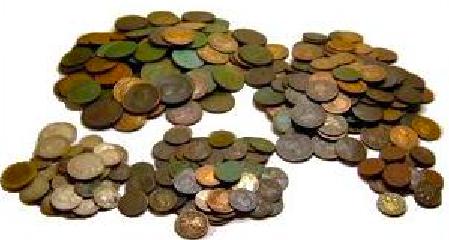Copyright © University of Cambridge. All rights reserved.
'Coins (2)' printed from https://nrich.maths.org/
Show menu
Why do this problem?
This activity gives the pupils opportunities for exploring the relationship between different denominations of currency. It also offers a context in which to become more fluent in addition and number awareness.
Possible approach
It would be good to use your native currency first and explore making various amounts of money. The activity can then be presented to the pupils just as it is.
The second part of each currency question will probably need some discussion so it would be good to allow pupils to work in small groups. Give them time to discuss their solutions as a whole class, particularly if they differ!
These were the coins available: 1 para, 5 para, 10 para, 20 para and 40 para; 1 Kurus, 2 Kurus, 5 Kurus, 10 Kurus, 20 Kurus, 25 Kurus, 100 Kurus and 500 Kurus.
So you could ask questions like:
What is the smallest number of coins needed (and what are they) to make 1260 Kurus 60 paras?
What is the largest number of different notes and coins you can use to make 1260 Kurus 60 paras?
The second part of each currency question will probably need some discussion so it would be good to allow pupils to work in small groups. Give them time to discuss their solutions as a whole class, particularly if they differ!
Key questions
How sure are you that this is the smallest number of notes and coins?
How have you gone about trying to find the highest number of different notes and coins?
How have you gone about trying to find the highest number of different notes and coins?
Possible extension
It would be good to look at parts of Europe and Africa in the 19th century that used a currency made up of para and Kurus. 40 paras made a Kurus.These were the coins available: 1 para, 5 para, 10 para, 20 para and 40 para; 1 Kurus, 2 Kurus, 5 Kurus, 10 Kurus, 20 Kurus, 25 Kurus, 100 Kurus and 500 Kurus.
So you could ask questions like:
What is the smallest number of coins needed (and what are they) to make 1260 Kurus 60 paras?
What is the largest number of different notes and coins you can use to make 1260 Kurus 60 paras?

 .
.